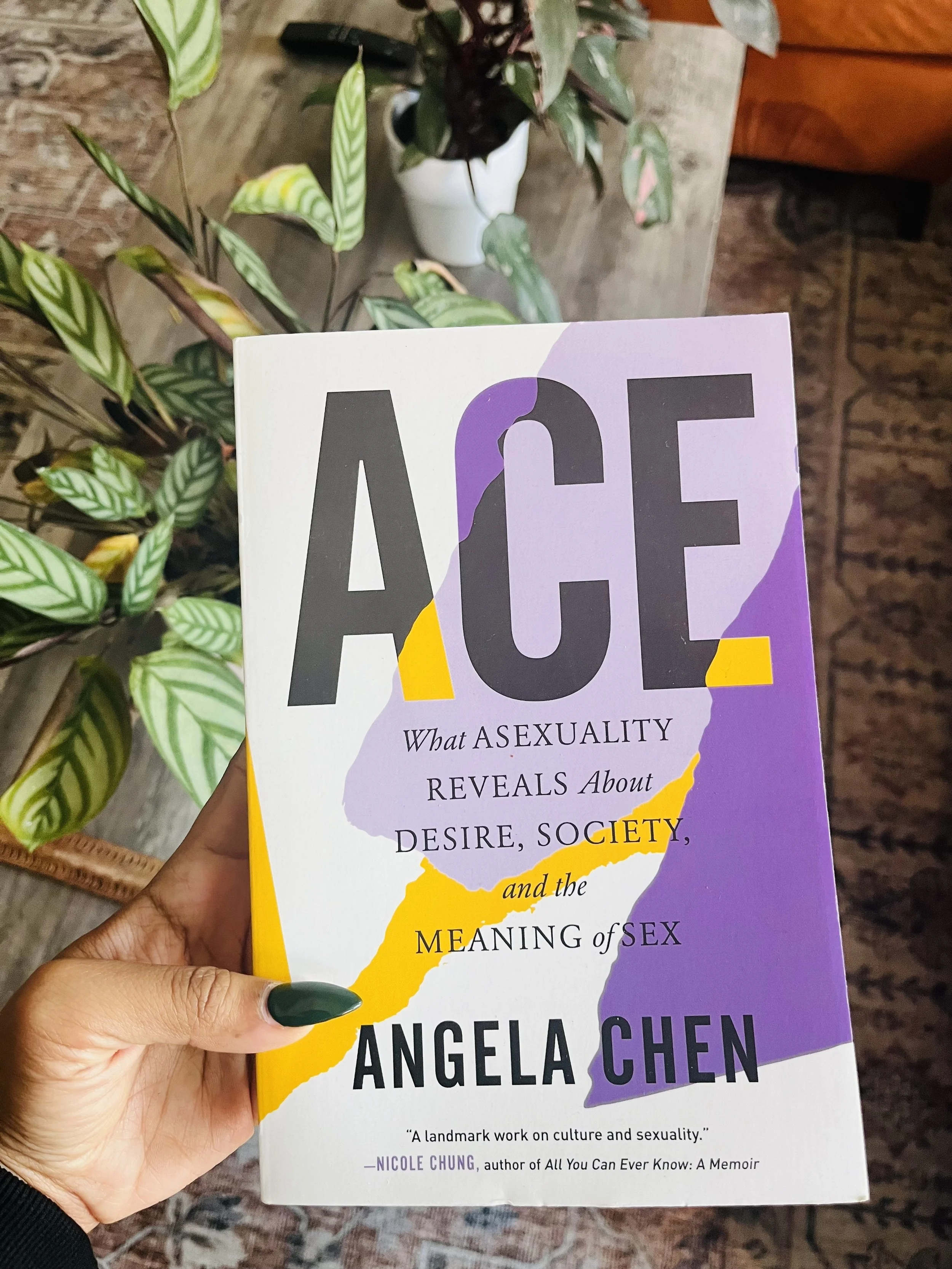My Journey to Asexuality: A Path to Self-Discovery and Meaningful Connections
In honor of Asexual Awareness Week, I want to take a moment to share my journey of realizing I’m asexual—a journey that took over two decades to fully understand. It has been treacherous at times, even funny in moments, but above all, it’s a journey I can now reflect on with gratitude.
The Beginning
I’ve been open about my experience with sexual trauma recovery; in fact, I documented my journey and partnered with Women Make Movies to distribute the documentary to sex education programs. (LINK)
To keep it brief, I grew up in a strict religious household where sex was a taboo subject—a mystical thing that only “happened” within marriage.
I was homeschooled until I began community college at fourteen. Enrolled in a world where classmates ranged from 18 to 35+, my first experience with sexual contact was sexual assault. For years, I didn’t recognize what had happened to me because that experience jaded my understanding of sex. I came to believe that sex was something you conceded to, something that could be taken from you, something men couldn’t help themselves from doing to you. My consent was often disregarded, and I found safety only in compliance.
By the time I turned 25, the resurgence of the #MeToo movement stirred something within me. As I listened to stories from countless women, I realized how many of us had endured violations of our bodies, our voices ignored, and our soft "nos" mistaken for opportunities to convince.
That same year, I made the decision to enter sexual trauma therapy. It was a leap that began my journey to healing—helping me forgive myself for what I didn’t know, reclaim my body, and rediscover pleasure in a space of consent and safety.
The Shift
After nearly a year of trauma therapy, I began dating again, this time with an emphasis on consent. The people I dated were aware of my history and made me feel safe in sexual encounters. I often checked in with my therapist, proud of the sense of empowerment I felt in my body.
Then, in one therapy session, the conversation shifted from consent to desire. For the first time, I asked myself, "Do I actually want the sex I’m having, or am I simply agreeing to it?"
This question grew louder when an ex-partner asked, "Why don’t you ever initiate?" I had no answer.
I realized I wasn’t having sex because I desired it—I was participating simply because it was offered to me in a safe way. I wasn’t forced, but I also wasn’t driven by any personal desire.
I knew that previous experiences, before trauma therapy, were traumatic because my ‘no’ was disregarded…but I never quite interrogated why I said no to begin with.
Curiosity got the best of me, and I started researching, reading, and reflecting. That’s when I stumbled upon asexuality.
I confided in one of my closest friends, an intimacy coordinator and sex educator. His response: "I knew it! I have a book for you!" He recommended Ace by Angela Chen. Reading it was the most seen I’ve ever felt.
What Asexuality Means to Me
Asexuality is an umbrella term for people who don’t experience sexual attraction. It’s a spectrum—some aces are sex-repulsed, others are sex-neutral, and some are sex-positive.
It’s important to understand that libido and sexual attraction aren’t the same. Many asexual people have high libidos, but it’s not directed at anyone. It’s like having an itch to scratch—a physical desire without the drive to engage with someone else.
I also learned that attraction comes in many forms—romantic, emotional, sensual. I’ve experienced deep feelings of connection throughout my life—loving kisses, cuddles, romantic dates, and the safety of sharing vulnerable emotions. But for most of my life, I mistook those feelings for sexual desire, when in reality, sex was something I consented to because of my partner’s advances, not because I wanted it. Through asexuality, I’ve learned that these various forms of intimacy CAN exist without sex or sexual attraction.
In Ace, Angela Chen describes sex as “a physical manifestation of an emotional response.” Sexual intimacy, when rooted in love and care, doesn’t feel sexual to me at all—it feels like love. But that’s rare. And my non existent sex drive makes those experiences few and far between, even within committed relationships.
Discovering my asexuality has clarified so many moments in my life. I used to feel utterly confused when flirtatious conversations turned sexual, unable to understand why my crushes sparked such expectations. I was baffled when expressing a desire to cuddle led others to assume I was propositioning them for sex. I’ve experienced deep romantic feelings for someone without any desire to take that intimacy beyond romance, and I often felt left out when my friends shared their candid sexual fantasies and escapades—stories I couldn’t relate to. Asexuality has been ever-present in my life; I simply lacked the language to articulate what I was experiencing.
The Best Part
Discovering my asexuality has strengthened my relationships. It’s allowed me to be more intentional about how I connect with others. It’s also made me a lot more vocal about my desires in the best way possible. That said, this realization did come with losses. Some relationships ended due to incompatibility, especially when sexual intimacy was a priority for the other person. But the people who remain in my life, both lovers and friends, accept me fully, and I feel safer, more seen, and more fulfilled than ever before. It’s also led me to fully bracing polyamory - another story for another day.
Final Thoughts
I hope this blog post encourages others to explore the kinds of intimacy that resonate with them. Asexuality is just one of many ways to experience connection, and there’s no right or wrong way to be. We all deserve to feel seen, heard, and loved for who we are.
Happy Ace Week, loves. :)

